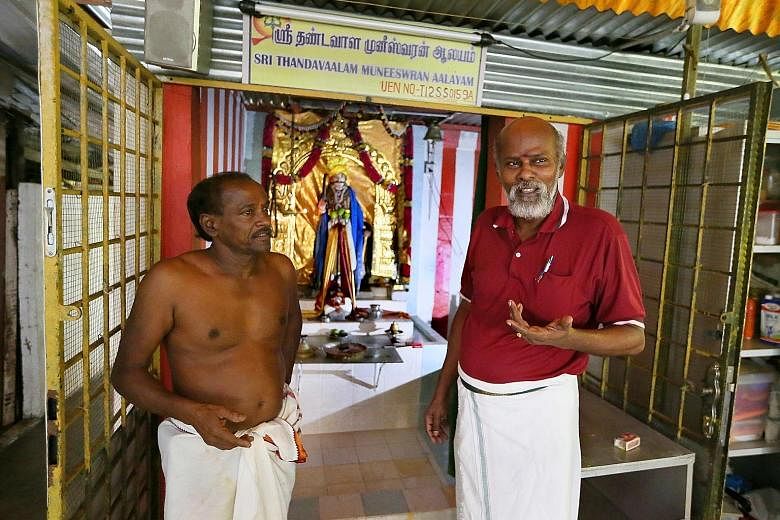A little-known Hindu shrine, built by workers of Malaysian train operator Keretapi Tanah Melayu (KTM) at least 20 years ago, will have slightly over a month to move from its Queensway site.
The Sri Thandavaalam Muneeswaran Alayam shrine, which occupies 30 sq m, is located along the former KTM railway track, under a flyover at the intersection of Queensway and Portsdown Avenue.
After five years of engagement, officials from the Singapore Land Authority (SLA) yesterday issued an encroachment advisory to the shrine's representatives, informing them they have to "remove the shrine, structures and other items by 18 January 2017".
The shrine has been occupying the land illegally for the last five years, after KTM stopped train services here and the land was returned to Singapore. Devotees pray to the Hindu deity Sri Thandavaalam Muneeswaran, who they consider a railway god.
On Monday, SLA sent a letter asking the shrine's cooperation "to vacate the state land immediately".
In the latest advisory, SLA said it had been engaging its representatives since 2011 and given them ample notice to relocate. It has also worked with agencies to source for alternatives, including co-location at other temples.
But these were rejected by the shrine's management committee, headed by provision shop owner Thirunaukarasu Adaikalam, and comprising some 20 members.
The shrine has to move because the land it sits on is not zoned for religious use and is part of the Rail Corridor, which is earmarked for redevelopment, the SLA said. The shrine also poses public health and safety issues, as some devotees cook over open fires.
After the railway workers who built the shrine left, devotees cared for it. Electricity and water supplies were cut, but they used a generator for power and carried water there. Besides the 100 or so devotees, not many people visit or even know about the place.
The shrine's management is aware the occupation of land is illegal. It has made appeals to MPs and various agencies since 2011.
On Dec 5, it submitted a petition signed by over 200 individuals to Tanjong Pagar GRC MP and Senior Minister of State for Law Indranee Rajah, appealing for the shrine to be allowed to remain or moved to a suitable site.
Civil servant Adaikalam Annadhurai, 64, the shrine's treasurer, said: "We feel a sense of belonging here. If possible, we don't wish to go. But if we need to, we would like to move somewhere nearby."
Mr Annadhurai said it is not easy to merge with other temples, as the devotees would not be able to conduct their own rituals.
"We worship a railway god, so we would like to move to a place near the railway," he said, adding that it would take more than 40 days of prayers before the deity could be relocated.
The shrine was featured last week as part of a Straits Times video feature Living City, which looks at places and spaces in Singapore that are often overlooked.


